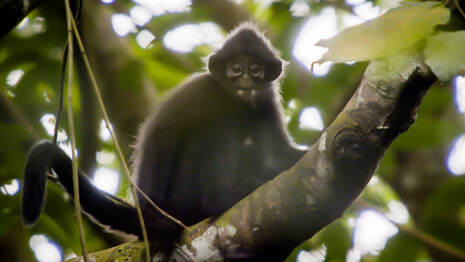Written by John Edward Betancourt THIS IS THE EMERGENCY SPOILER ALERT SYSTEM...YOU ARE ADVISED TO READ AT YOUR OWN RISK... Over the course of the past few weeks, Wild City: Singapore has taken us on quite the incredible journey. For we’ve gained some powerful knowledge about this beautiful city and the diverse wildlife that lives there alongside the millions of people that also happen to call this place home. But as the old saying goes, all good things must come to an end, and sadly we have reached the end of the line when it comes to this magnificent documentary. And knowing that the end was in sight left a broad question hanging over my mind, in that; how was this majestic story going to come to its end? Because this documentary has done a phenomenal job of teaching us about this city and its unique situation in nature, and it also educated us well on how mankind and the planet can live together in harmony with a little bit of effort, making it seem as though we’ve covered just about everything there is to cover. But as it turns out, ‘Forest Life’ took the time to explore one last important element about this beautiful place, one that is supremely important in that, we can never forget that nature always finds a way thrive and for proof, well look no further than the jungles that surround Singapore. For life is teeming in this place, complete with species that people had thought were long gone from the face of the earth. Such as the Raffled Banded Langur, a species of simian that once thrived in this area, but they were pushed around and out thanks to man’s expansion. But rather than surrender this paradise, they made new homes in the surrounding trees and slowly but surely, this species is working on making a comeback since they are breeding, and I’m sure it’s only a matter of time before their small number of sixty strong grows far larger. Plus, they’re not the only ones finding new life after coming close to the brink of extinction. For on the ground, the tiny Lesser Mousedeer is also making a comeback and this nocturnal animal is finding new ways to thrive and survive and repopulate in a sliver of the world it once knew. Yet, while it was amazing to see various species of animals fight to survive and win that battle in slow and steady fashion, there were some other amazing creatures working to make it to another day that this show took the time to highlight as well. For example, we were introduced to the Black Bearded Draco in this story, a species of lizard that never bothers to touch the ground, they just hang out on tree bark day and night, gently eating whatever comes their way, and they’ll leap from tree to tree if a threat comes near them. Plus, I also loved how this episode highlighted some of the nocturnal creatures that roam the landscape here, including some feisty scorpions that love to lie in wait for a meal. If anything, it was just amazing to see how nature is thriving and growing mere moments away from mankind’s domain, and that made this episode quite humbling in its own right. Because seeing several species that were thought to be lost to time, speaks to how resilient our world is, and how determined the various animals are that populate it, and how they will do whatever it takes to survive, and that serves as a fine reminder to the audience that we are not masters of this domain, we are partners plain and simple. Which means we have to do better and be better when it comes to our animal and insect neighbors. Because we share this world, plain and simple, and my thanks to BBC America for once again putting together a thoughtful and dynamic documentary about a place I knew nothing about and truly, I cannot wait to see what other wonders this network sends our way documentary wise, since their teams always find a corner of the earth that each and every one of us, need to know more about.
0 Comments
Leave a Reply. |
Archives
April 2025
|
|
© 2012-2025, Nerds That Geek LLC.
All Rights Reserved. |
uWeb Hosting by FatCow

 RSS Feed
RSS Feed